How to Do Meditation in Nature in Christian Meditation
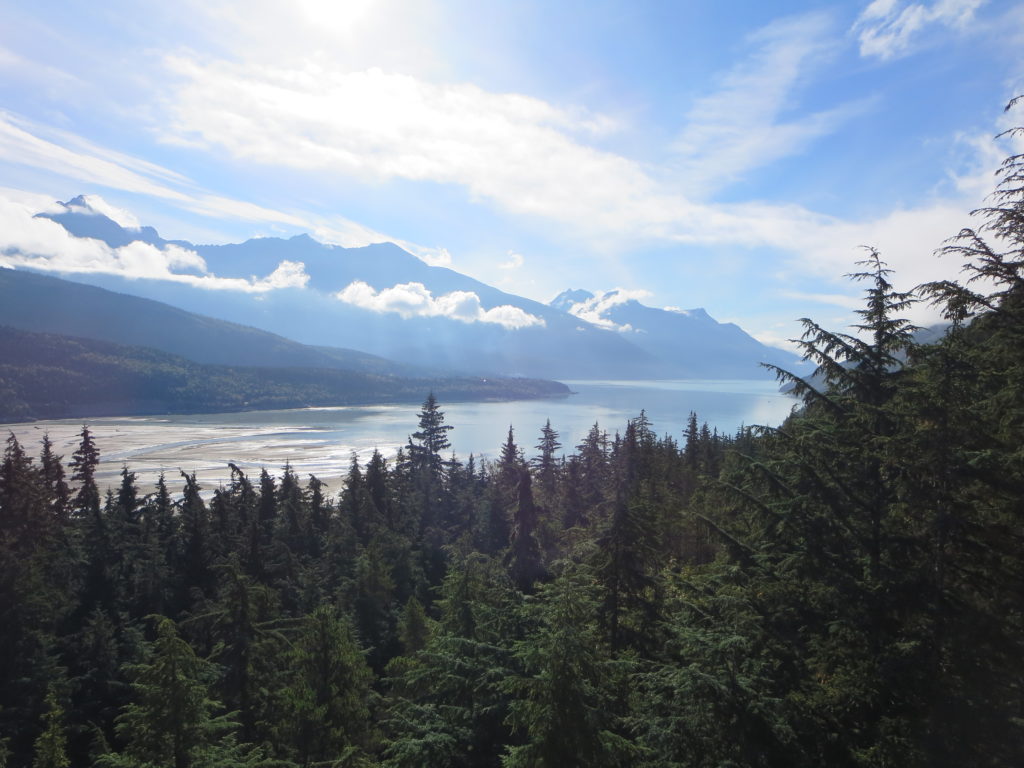
Meditation in nature allows us to contemplate and enjoy God’s nearness through marveling at the beauty and power of creation. Christian mediation in nature is the act of spending time in silent personal thought in order to experience closeness to God. Meditation in nature has been practiced since Biblical times and some of the most poetic passages in the Bible celebrate God’s grandeur, power, might and goodness through what we see in nature.
Here are some outdoor meditation in nature prayer ideas for you.
1. Reverie as meditation in nature.
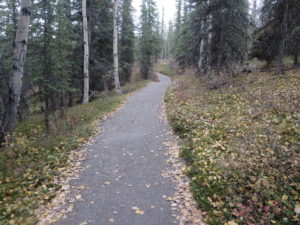 Reverie as a form of meditation in nature focused on the sensation of pleasure and enjoyment you feel as you admire the refreshing splendor of nature. Reverie is defined as being “pleasantly lost” in your personal thoughts. Reverie is not simply a visual experience but rather an experience of being totally immersed in the experience of God’s goodness in this particular spot out in nature. Reverie is enhanced by all of the senses like the feel of the warm sun or a soft breeze on your face, the smell of damp earth and the sound of trees rustling in the wind.
Reverie as a form of meditation in nature focused on the sensation of pleasure and enjoyment you feel as you admire the refreshing splendor of nature. Reverie is defined as being “pleasantly lost” in your personal thoughts. Reverie is not simply a visual experience but rather an experience of being totally immersed in the experience of God’s goodness in this particular spot out in nature. Reverie is enhanced by all of the senses like the feel of the warm sun or a soft breeze on your face, the smell of damp earth and the sound of trees rustling in the wind.
The main spiritual focus of reverie is being lost in God’s beauty in nature. It centers on a feeling of thankfulness and an awareness that you are able to enjoy this beautiful time and place because God created it. It is good because he is good.
When enjoying reverie as a form of prayerful meditation, you may choose to respond by wordlessly soaking in the experience or you may choose to respond by forming words silently or out loud. In the first approach you are wordlessly present in the moment with God, letting your soul and spirit drink in his goodness. In the second approach, you actively create mental or verbal words of praise and express your appreciation to God for his world. This can include using the words of hymns and praise songs that come to your mind to describe your experience.
Putting reverie into words has given us many moving passages in the Bible, especially in the book of Psalms. In one passage the writer says, “The heavens declare the glory of God; the skies proclaim the work of his hands. Day after day they pour forth speech; night after night they display knowledge.” Psalm 19:1,2 NIV
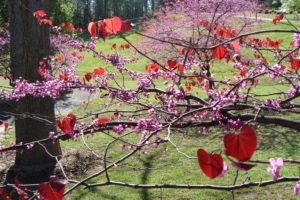 2. Contemplation as meditation in nature.
2. Contemplation as meditation in nature.
Contemplation is meditation that centers on focused awareness. Contemplation is defined as the act of spending quality time looking thoughtfully at something. In this process, your attention is drawn to something specific you see in nature and you begin to use your curiosity and experience to wonder why things are this way. You observation and reasoning power are activated by the Holy Spirit and your thoughts are gently led toward a lesson or truth that you may or may not have been seeking.
As an example, one morning on my prayer walk my feet were crunching on a profusion of acorns on the sidewalk that had fallen from an oak tree. I wondered why the tree had produced so many acorns when only a tiny portion of these acorns would fulfill the intended purpose of sprouting into an oak sapling. Then I thought, “The tree didn’t know that squirrels would eat these nuts.” At that idea, a series of thoughts dropped into my mind, “Although squirrels eating the acorns wasn’t the intention of the tree at all, God used it for both of their goods. Squirrels get fed on acorns and new oak trees get planted when squirrels bury the nuts.” This simple contemplation led me to a new truth about my life that everything I planned and did might not fulfill the purpose that I had intended, but even when it didn’t, it could still fulfill God’s greater, grander purpose that I was completely unaware of.
Try this simple process to use nature as a means meditation. Allow your mind to look for unusual features you’ve never noticed before or questions you have as to why things are designed as they are. When something seems to capture your attention, allow your mind to go with the gentle leading of the Holy Spirit. Don’t try and rush the thought process or over-think your investigations. Give time and space to a careful, thoughtful examination. If nothing new or profound comes, move on to the next natural object that captures your attention. It’s possible that the process itself of stopping to really see things prayerfully and attentively may be what you needed to gain that day.
Here is an example of a meditation in nature that a writer in the Bible learned by observation of the natural world. “Four things on earth are small, yet they are extremely wise: Ants are creatures of little strength, yet they store up their food in the summer; coneys (rock badgers) are creatures of little power, yet they make their home in the crags; locusts have no king, yet they advance together in ranks; a lizard can be caught with the hand, yet it is found in kings palaces.” Proverbs 30:24-28
It’s obvious that the writer took time to carefully observe ants. We can imagine the writer watching an ant trail as tiny specks of ants carried large grains of food twice their size on a high speed sprint to their hidden underground ant hill.
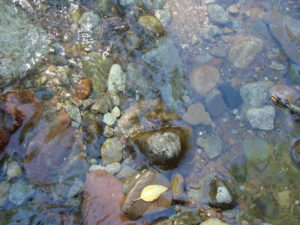 3. Reflection meditation in nature
3. Reflection meditation in nature
Reflection is mediation in nature where you create the time and mental space to seriously think about and ponder some aspect of life. Reflection is defined as giving serious thought to things as you consider them. When practicing reflection you often go out into nature with your personal need or question in mind. Other times being out in nature initiates a time of reflection on your values and direction.
In reflection, nature becomes both your sanctuary and your teacher. Nature forms a sanctuary and a place away from the business of your normal life where you can gain perspective. It offers simplicity, fresh air, sunshine and peace and quiet for your time of thinking deeply about life. And as you expose yourself to the sensations of nature, God’s Holy Spirit is able to show you a lesson through the natural world around you.
Reflection can take any form. It can involve looking at your past and putting it in perspective, trying to piece together your thoughts and feelings about the present or seeking guidance for your future. It normally is about meaning and purpose. Reflection can also be about who God is and how He works in the world.
The Bible tells us that Jesus used nature as a place to slip away for prayerful perspective. The Bible says, “Very early in the morning, while it was still dark, Jesus got up, left the house and went off to a solitary place, where he prayed.” Mark 1:35 NIV When the disciples came looking for him because all of the people in town wanted Jesus to come back and do more healings, Jesus replied, “Let us go somewhere else- to the nearby villages- so I can preach there also. That is why I have come.” (Mark 1:38) Apparently while Jesus was out in nature by himself, his next step in his overall ministry became clear to him.
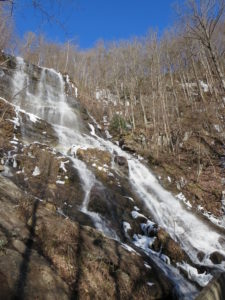 4. Take a pilgrimage in nature
4. Take a pilgrimage in nature
Normally pilgrimages are undertaken to reach a sacred place as an act of religious devotion. Taking a destination oriented hike can also be used as a journey toward a spiritual destination. Combining walking or hiking with meditation can be very effective as you separate yourself from the distractions of life and travel toward a solitary place where you can meet God.
One way to do an outdoor pilgrimage is to use a prayer labyrinth. You can find these at churches, college campuses and retreat centers. The marked pathways circle in one direction toward the center. When walking a prayer labyrinth, one suggestion is to bring before God a particular difficulty you are having while journeying toward the center. Once you reach the center, mentally leave the problem there with God and then trace your steps back out having been unburdened.
This idea can be adapted to a walk or a hike to an outdoor destination such as an overlook at the top of a hill or down to a lake or river. Once you reach your destination, release the concern you have and then go back down the path in an attitude of meditation and thankfulness.
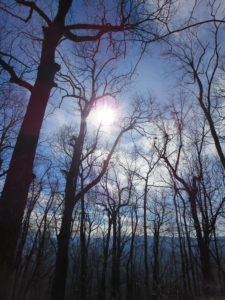 5. Use meditation aids outdoors.
5. Use meditation aids outdoors.
Using aids to meditation can enhance your experience outdoors. If you like to write, bring a journal and a pen and then find the perfect spot to sit and write down your reflections. Aids that help you capture and actively explore natural beauty such as cameras and sketch books can greatly enhance your sense of reverie. Taking along your Bible or another devotional book can be useful for personal enlightenment and reflection. If you’re a collector, take a small bag to collect natural items such as leaves, rocks or shells that catch your eye. Then meditate during the process of seeking and finding.
6. Take your time.
It takes time to get into a meditative mode, so allow yourself enough time to linger until you feel refreshed and refocused. Reverie requires the least amount of time and can be done during a quick pause during the day, such as when you see a magnificent sunset. Both contemplation and reflection take longer because they require you to engage in focused attention that leads in a series of steps to a deeper truth. Ten minutes would be a good minimum starting point and spending a much longer time is ideal.
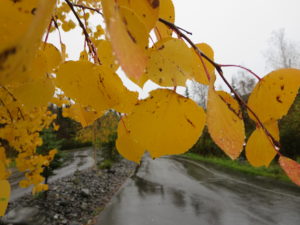 My Personal tips
My Personal tips
I have a section of my morning prayer walk that I set aside for meditation. It’s near the end of my walk so by the time I reach this road, I’ve already finished praying for the sick and those in need. I then am able to clear my mind of what’s going on in my life and make it a point to really see and experience the beauty of nature. Although it’s a street in a suburban neighborhood and not a pristine nature preserve, there are trees, hills, yards and flowers that change from season to season. Best of all, since I walk first thing in the morning, the sun is often just coming up and the sky can be anything from a hint of gray to a glorious vista of pink and golden.
Also, don’t overlook the beauty and the meditational opportunities of going out into nature on a rainy day. I try to do my prayer walk rain or shine. Your perspective can be refreshed on a rainy day by the added elements of the movement of water downhill, how rain drops cling to the tips of flowers and leaves and how the pavement shines. I use the rain as part of my prayers by touching my finger to a drop on the tip of a leaf and then use the water to make the sign of the cross on my forehead.
Video example of meditating in nature using reflection on the subject of chronic illness
Other articles of interest
Using Christian Reflection Meditation in Nature to Receive Insights from God
 Copyright Karen Barber 2014. All rights reserved.
Copyright Karen Barber 2014. All rights reserved.
